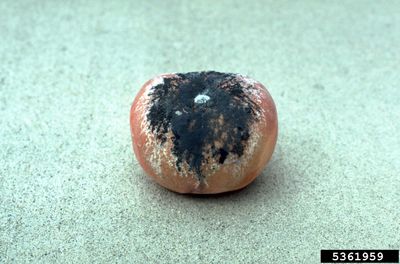Peach Rhizopus Rot Info
Rhizopus rot is a fungal disease that affects stone fruits, usually after they’ve been harvested. It can also appear on overripe fruit that’s still on the tree. Peach rhizopus rot symptoms usually start as small, brown lesions in the flesh, which can rapidly develop into a flossy white fungus on the skin, as quickly as overnight. As the spores grow, the floss turns gray and black. The skin of the fruit will slip off easily when handled. Needless to say, once these symptoms appear, the infected fruit is pretty much a lost cause.
What Causes Peach Rhizopus Rot?
Rhizopus rot of peaches develops only in warm conditions, and only on very ripe fruits. The fungus will often grow on rotten fruit under the tree, spreading upward to the healthy fruit above. Peaches that have been damaged by insects, hail, or overhandling are especially susceptible, as the fungus can more easily break through the skin. Once one peach has been infected, the fungus can travel rapidly to other peaches that are touching it.
Peach Rhizopus Rot Control
To help prevent the spread of rhizopus rot to healthy peaches, it’s a good idea to keep the orchard floor clear of fallen fruit. There are sprays designated for rhizopus rot, and it’s best to apply them toward the end of the season, near harvest time. During harvest, make sure to handle your peaches with care, as any breaks in the skin will help the fungus spread. The most effective way to fight the fungus post-harvest is to store your peaches at 39 degrees F. (4 C.) or below, as the fungus can’t develop under 40 degrees F. (4.5 C.). Even fruits harboring the spores will be safe to eat at this temperature.
